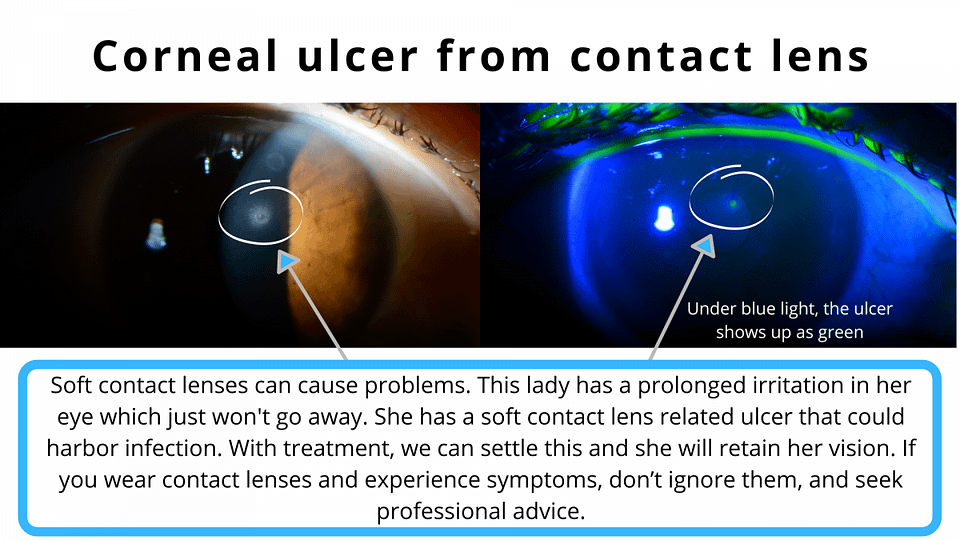Corneal Erosion
Waking with Ulcers – Corneal Erosion
In order to understand corneal erosion, we must first understand the cornea. The cornea is the first lens of the eye, focusing light to form an image at the back of the eye. The cornea has many nerves and is VERY sensitive and is why we react the way we do with dust in the eye. Any break in the skin of the cornea (called a “corneal ulcer”) is VERY painful. So when we wake with ulcers it is extremely uncomfortable.
The skin of the Cornea
In normal healthy cornea’s, the skin of the eye normally sticks very firmly to the surface of the cornea. Otherwise, every time we blink, the skin would shear away, and this is very painful. When the skin does NOT stick properly to the surface, this is called “recurrent erosion syndrome”. Dr Maloof thinks of it, as a skin non-adhesion syndrome.
During the night or waking
A lack of oxygen when the eye lids are closed makes the skin of the cornea swell. In healthy corneas, this is not a problem. But when the skin does NOT stick properly in recurrent erosion syndrome, it sticks to the eye lid and tears the skin away during the night as the eyes roll around, or on waking as the eyelids open. The tearing of the skin away from the cornea creates a tearing painful sensation, lasting minutes to hours.
Cause
Recurrent corneal erosion syndrome typically happens after injury, such as a poke in the eye from a finger, or a hairbrush. Contact lenses can also cause corneal ulcers to form. There are medical conditions which cause recurrent erosion syndrome, such as “dystrophies” of the cornea where the skin naturally has difficulties sticking to the cornea. It is more common in middle aged menopausal women.

Treatment for corneal erosion
There are several options to treat recurrent corneal erosion syndrome. These include:
- Simple scraping of the cornea
- Laser treatment
- Chemical treatment
- Puncturing the cornea with a needle
- Mechanical polishing
Of these, Dr Maloof recommends polishing the cornea. This procedure is carried out in the office, with no need for additional operating theatre or anaesthetic expense and has the highest success rate. In over 20 years’ experience with this procedure, Dr Maloof has never had a failure.

